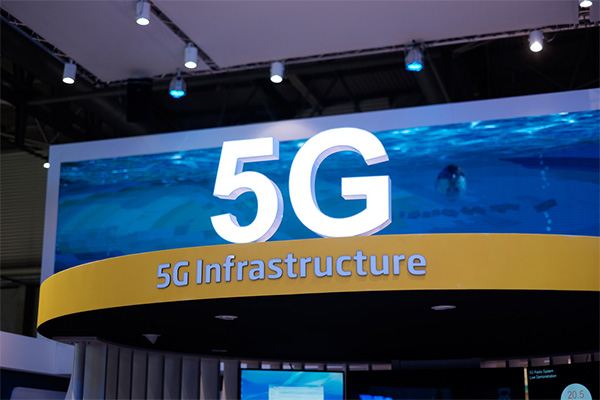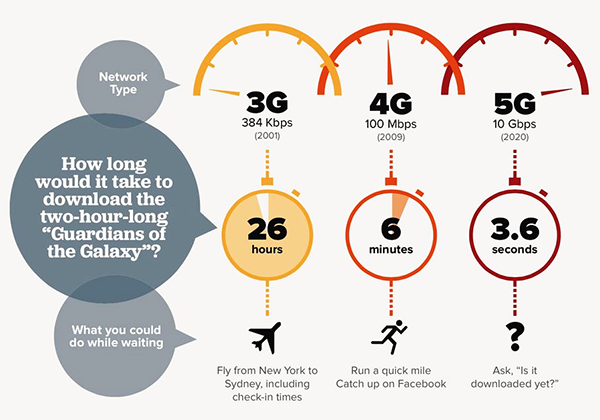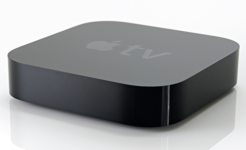
What is 5G? [Video]
Video uploaded by Techquickie on April 14, 2017
5G Mobile Network Is Coming. Is the Industry Ready?
The deployment of the 5G mobile network has been rumored for as long as three years now. As you know, G stands for generation. It’s a great departure from the 4G or LTE network, and asks for the complete overhaul of equipment.
In other words, new and more expensive antennas should be erected, new equipment should be installed and new mobile devices should be rolled out for the end users.
In return we’re going to get a high speed highway for all the mobile gadgets that we already have and for all the smart homes and transportations. The need in faster broadband is urgent and growing every day. Phone carriers have no other way out but to draw a road map and start introducing 5G networks.
The Asian countries with their enormous population are the first to try out this technology. For instance, Japanese carriers KDDI, NTT Docomo and SoftBank Group tried 5G for live streaming, virtual reality imaging and automated driving. In the last case the 5G connection supported performance of the driverless convoy.
KDDI together with the Korean Samsung also tried 5G mobile network on a moving train. The speed of the train was more than 100 km per hour but the connection still managed to work fine with the peaks of speed being 1.7Gbps both in download and upload speed.

5G Speed
In China the pioneer of the 5G technology is Huawei. The company has been testing 5G since 2014. Together with another Chinese IT giant ZTE Huawei is heavily investing into the first 5G smartphones. What about the leading companies like Apple, Qualcomm, and Intel?
While Apple is keeping any info pertaining to 5G mobiles tight, Qualcomm touted the X50 5G modem. This device was tested in October, 2017 on the 28GHz millimeter wave frequency band and allegedly reached gigabit speeds during the process. Once 5G is fully deployed, the results will rocket up to 5Gbps and more, the company’s representatives claimed.
Intel sports the pack of 5G technologies and devices.They are capable of supporting the end-to-end 5G network: from smart devices to the cloud, all distance long. The test deployment is going to take place during the 2018 Pyeongchang Olympic Winter Games. It will include the open 5G FlexRAN platform as well as processors for edge and core computing. Korea Telecom (KT) and Samsung are the Intel local partners for the event.
In 2017 KT built 5G towers and relay stations in areas of Pyeongchang and Gangneung. Even though there are no dedicated 5G frequencies yet (their dedication is the subject of the international conference in 2019) the South Korean government is going to provide the 5G 28-GHz range. The pilot 5G network will serve at Olympic venues to bring an enhanced experience to all the fans. Thanks to the ultra-small wireless cameras and communication modules, viewers in the area will be able to enjoy high-definite real-time images from the athletes’ point-of-view.
This is called Sync View, while the technology named Omni View will provide a multi-streaming system for a 360 degree perspective of the sport event in VR. Samsung is going to provide fans and guests with special 5G tablets for this.
Surprisingly enough, no info has leaked about these tablets or whether Samsung is going to implement this feature in the products of 2018 or 2019. Likewise, other companies are very secret about these devices, except the Chinese second phone-maker and provider ZTE.
So, when I heard that AT&T announced the deployment of 5G networks towards the end of the 2018 year in twelve states, I grew skeptical. Firstly, because the company is definitely surviving with all those layoffs that hit the staff hard around Christmas. Secondly, because there are still no mobiles for the network. Lastly, as I’ve mentioned above, there are no dedicated frequencies yet, just testing broadbands. This fact alone, makes the whole idea not make any sense.
So, I went to AT&T’s website and learned that pre-standards for 5G was tested in 2017 in Texas, Michigan and Indiana. The new network was tested with average customers as well as with small businesses and education facilities. But covering twelve states with the 5G grid is a big leap. Still the question persists: what devices are used with the 5G network? What company made them? And why is it such a secret?!
We learn every small detail about the casings, cameras, ID methods to come but not a crumb of information about the broadband connectivity! That’s what puzzles me the most. Are we going to sell our smartphones and tablets just after one year of use, even the very expensive iPhone X and Samsung Galaxy Note 8 included?
Update!:
As it surfaced, two Republican representatives, Michael Conaway and Liz Cheney, introduced a bill that will block any activity of Huawei and ZTE on the American market. The legislators worry about alleged ties of the above mentioned companies with the Chinese government. Consequently, AT&T is pressed to walk away from the deal with Huawei. The company was reportedly going to buy 5G mobile network equipment from Huawei, including their smartphones. Mobile phones by ZTE are already available from AT&T but the company may quit selling them as well. We promise to look into the matter later and share our opinion on the subject. Stay tuned!
And another update!
Blogger Axios discovered that the Trump administration is planning to nationalize the 5G network in the U.S. The source used the word ‘considering’, but we all know that Donald Trump is a bit paranoid about the authoritarian regimes. His new idée fixe is that Chinese manufacturers will insert backdoors into the 5G network equipment, and thus be able to get the classified data.
A senior National Security Council official presented a memo about the importance of the governmental control over the 5G networks. Since the said network is going to support AI driven transport, drones and arms, the concerns look reasonable. But nationalizing them doesn’t help the issue of the cybersecurity. God knows, we’ve seen enough proves to that, when ‘moles’ were discovered in the secret services of the U.S or their employees leaked the sensitive information out of their negligence and incompetence.
The memo suggests that the U.S government pay for building the centralized single 5G network. It’s unclear, if the grid will be available for commercial purposes or serve as the government’s communication network only. If so, the ISPs will have to build their own grids. It’s not impossible, because the range of frequencies for the 5G is large.
But the problem is that this approach is going to disrupt not only the industry but the whole idea of freedom. There’s an alternative, not so likely to take place, though. The companies will build their own 5G networks and compete to sell it to the government. It’s going to be more expensive and longer. It looks, the Trump administration is seriously concerned that China dominates the electronics market. Well, it didn’t start yesterday, did it? China has been for years making our phones, TVs and PCs. If we really want to provide the security for our networks, let’s start making the electronics in America.
Links
- AT&T’s and Verizon’s 5G networks are coming this year, and your internet speeds will be insanely fast when they arrive – Business Insider
- Thinking to sell your phone? iGotOffer is the best place to sell smartphones and other devices online.
- Get to know what 5G is
- 5G Mobile Standard and the Internet of Things






Facebook
Twitter
RSS